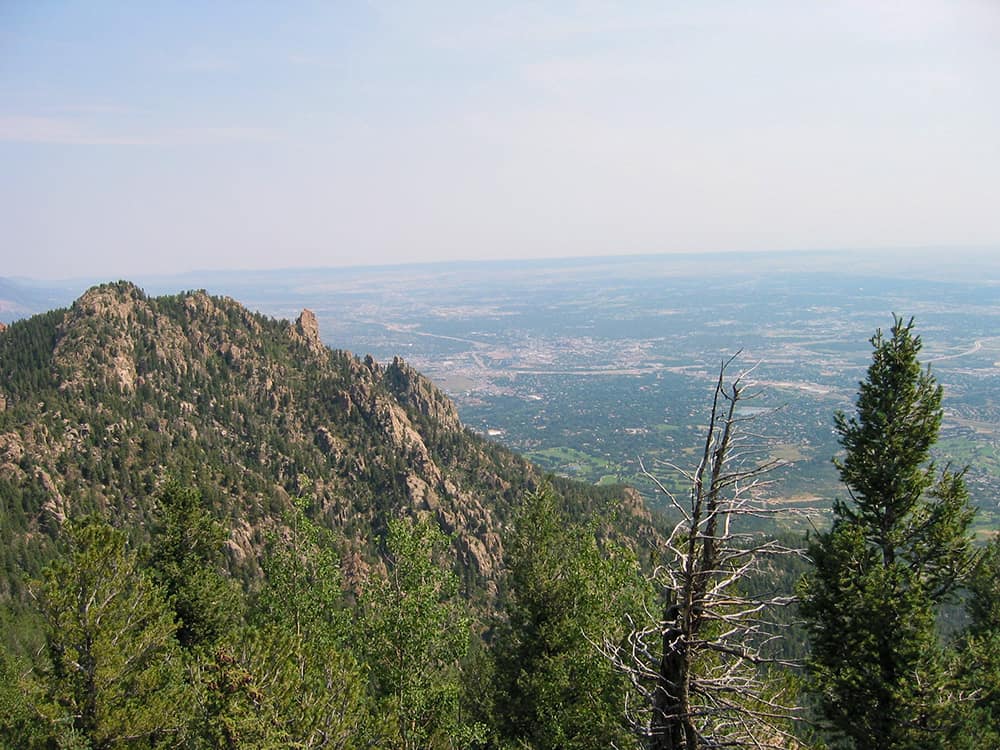Cheyenne Mountain
225 acres, el paso county
Colorado Springs is known for its incredible views of mountain peaks. As one approaches from most any direction, Pike’s Peak dominates the skyline. Once within city limits, however, Cheyenne Mountain, defining the transition between the plains and the mountains, is the area’s most prominent landmark. Thanks to the dedication and commitment of Cheyenne Mountain Reserve, LLC, the City of Colorado Springs, Colorado State Parks, and the involvement of Colorado Open Lands, hundreds of acres of Cheyenne Mountain are permanently protected as an addition to Cheyenne Mountain State Park.
In popular culture, Cheyenne Mountain is most widely known as the location for the underground North American Aerospace Defense Command (NORAD) operations center, developed during the Cold War. Colorado Springs faced a military boom during this era due to the establishment of Fort Carson, Peterson Air Force Base, and the United States Air Force Academy. To provide television and communications services to the burgeoning city, an “antennae farm” was constructed on the central highest point of Cheyenne Mountain in the 1950s. This cluster of communications towers is still prominent today.
Colorado Springs’ rapid growth continued through the 1990s. In 2000, Colorado State Parks and the City of Colorado Springs achieved a major preservation victory when, together, they purchased 1,680 acres of the JL Ranch on the southeastern flank of the mountain. The entirety of the JL Ranch was slated to become a housing development comprised of 1-acre lots.
Many, including State Parks and the city, believed that this victory was incomplete. The long-standing vision was to acquire an additional 1,000 acres to the west of the JL Ranch property, protecting unique geology, stunning views of the city, and connecting the lower elevation grasslands and shrublands of the JL Ranch to the subalpine conifer community of Cheyenne Mountain’s peak within the Pike National Forest.
Chris Leiber, with Colorado Springs Trails Open Space and Parks (TOPS), put it this way, “You can’t hike around the JL Ranch acquisition and help but look up at Cheyenne Mountain, which dominates the view, and think that you want to hike up to that notch, ridge, or outcrop. It’s a natural extension of the existing Park.”
Adds Rich Dudley, Park Manager for Cheyenne Mountain State Park, “It’s been a vision of mine to connect the lower elevation Park land with the extensive public lands to the west. It would create a much larger public lands presence for recreation and public enjoyment.”

